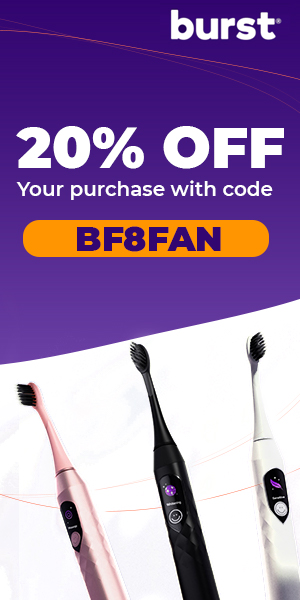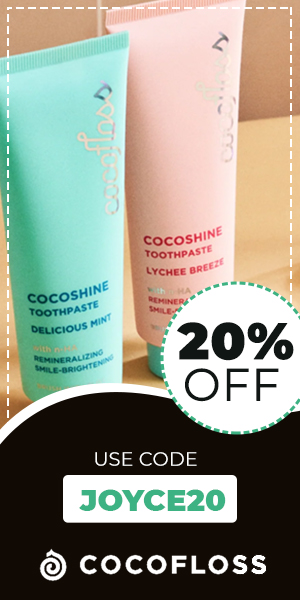Many people want a brighter, more confident smile.
While professional teeth whitening delivers dramatic results, at-home whitening strips offer a convenient and affordable option. These thin strips coated with peroxide gel can help reduce the appearance of stains and brighten your smile.
There is a common question for those that first start using whitening strips—when is the best time to brush your teeth (in relation to using whitening strips)? To ensure you get the most out of your whitening experience, it’s important to understand this process.

Below is some helpful information about whitening strips and whether you should brush before or after their application.
What Are Whitening Strips?
Whitening strips are thin, flexible pieces of plastic coated with a whitening gel. This gel typically contains hydrogen peroxide or carbamide peroxide, active ingredients that work to break down stains. The strength of the whitening agent varies between brands.
To use whitening strips, you apply them directly to your teeth, ensuring the gel-coated side makes contact with the tooth surface. The strips are then left on your teeth for the recommended amount of time, usually around 30 minutes to an hour. During this time, the peroxide penetrates the outer layer of the tooth (the enamel) to target both surface stains and deeper discoloration.

Some benefits of whitening strips include:
- Convenience: Whitening strips offer an easy and convenient way to brighten your smile from the comfort of your home.
- Affordability: Compared to professional whitening, strips provide a more budget-friendly option for teeth whitening.
- Accessibility: Whitening strips are readily available over-the-counter at most pharmacies and grocery stores.
Brushing Before Using Whitening Strips
Many dentists recommend brushing your teeth before applying whitening strips. There are a couple of major benefits to this approach:
- Clean Surface: Brushing removes plaque and food debris, ensuring a clean surface for the strips to adhere to. This direct contact may maximize the effectiveness of the whitening gel.
Reduced Trapping: Brushing helps eliminate anything that could potentially get trapped under the whitening strips, minimizing the risk of uneven whitening or discomfort. - Sensitivity Considerations: While it’s fine to brush before applying strips, some dentists advise waiting a short period (around 30 minutes) after brushing before application. This helps avoid potential gum irritation, especially if you have sensitive teeth.
Brushing After Using Whitening Strips
Another option is to brush your teeth after you’ve removed the whitening strips. Here’s why this might be a good method:
- Gel Removal: Brushing after using strips helps remove any residual whitening gel from your teeth. This prevents the gel from staying on your teeth for an extended period, which could increase sensitivity.
- Fresh Breath: Brushing after the treatment can give you a fresh-mouth feeling and improve your breath.

Important note: While brushing immediately after strip removal is generally safe, using a soft-bristled toothbrush and gentle strokes is key to protecting your enamel.
When to Seek Professional Whitening
While at-home whitening strips offer a convenient and affordable solution for brightening your smile, sometimes professional whitening might be a better option. Here’s when you might consider seeing your dentist for whitening:
Faster, More Dramatic Results
Professional whitening treatments in a dental office utilize stronger concentrations of peroxide. Dentists can customize trays for your teeth, ensuring the gel reaches all surfaces effectively. This can lead to faster, more noticeable results compared to over-the-counter options.
Severe Discoloration
If you have deep stains or significant discoloration that doesn’t respond to at-home whitening, seeking professional help is usually the best course of action.
Underlying Issues
Sometimes, yellowing or staining of teeth can be caused by underlying dental problems. Professional whitening can be combined with addressing these concerns, leading to a healthier and brighter smile overall.
Sensitivity
If you have sensitive teeth, your dentist can recommend a professional whitening system designed specifically for those with sensitivity issues.

While professional whitening is generally more expensive than at-home strips and may require multiple visits, it’s an excellent option if you want faster results, have severe stains, want personalized treatment to address tooth sensitivity, or have other underlying dental concerns that need to be addressed before your whitening treatment.
Tips for Successful Whitening
Whether you choose at-home strips or professional whitening, there are several things you can do to support optimal whitening results:
- Follow the Instructions: The most important factor is to carefully follow the instructions on the whitening product you choose. This includes properly applying the strips (or trays, if you opt for professional whitening) and adhering to the recommended treatment time and frequency.
- Consistency is Key: To see noticeable results, it’s important to use whitening strips consistently for the recommended period. If you use them sporadically, you’re unlikely to see the whitening effect you desire.
- Maintain Good Oral Hygiene: Regular brushing (twice a day) and flossing support overall oral health. Plus, clean teeth provide a good foundation for whitening products to work effectively. Consider using a whitening toothpaste in conjunction with your whitening strips for an added boost.
- Avoid Staining Foods and Drinks (Temporarily): During your whitening treatment and for a little while afterward, limit your consumption of dark-colored foods and drinks that can easily stain teeth. These include things like coffee, tea, red wine, dark berries, and tomato sauce.
- Manage Expectations: While over-the-counter whitening strips provide visible brightening, they may not deliver the same dramatic white results as a professional whitening procedure. Setting realistic expectations is essential to avoid disappointment.
So…Before or After?
Ultimately, the best approach may depend on your individual preferences and your teeth’s sensitivity. It’s crucial to always follow the specific instructions provided with your chosen whitening strips. If you are unsure about the process or have concerns about sensitivity, consider consulting with your dentist.

Whether you opt for at-home whitening strips or explore professional options, taking steps toward a brighter smile can boost your confidence, mood, self-esteem, and overall well-being.





















